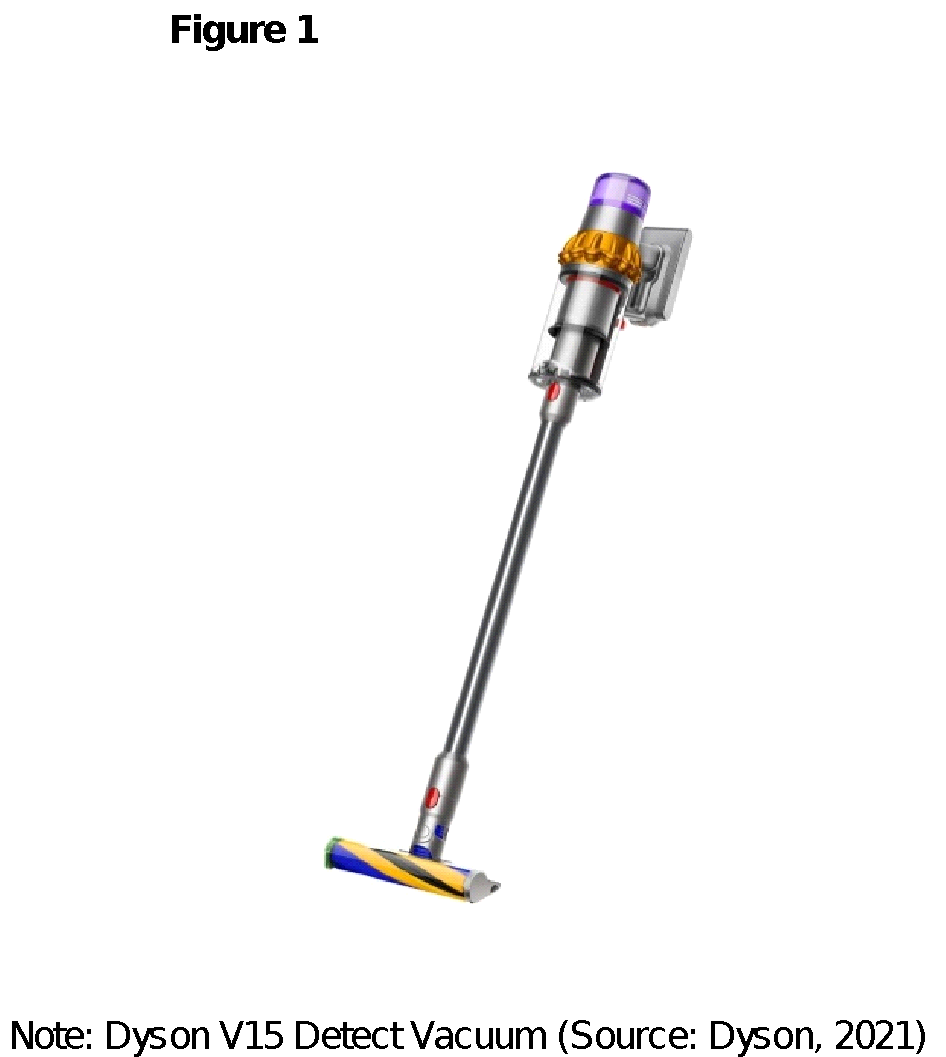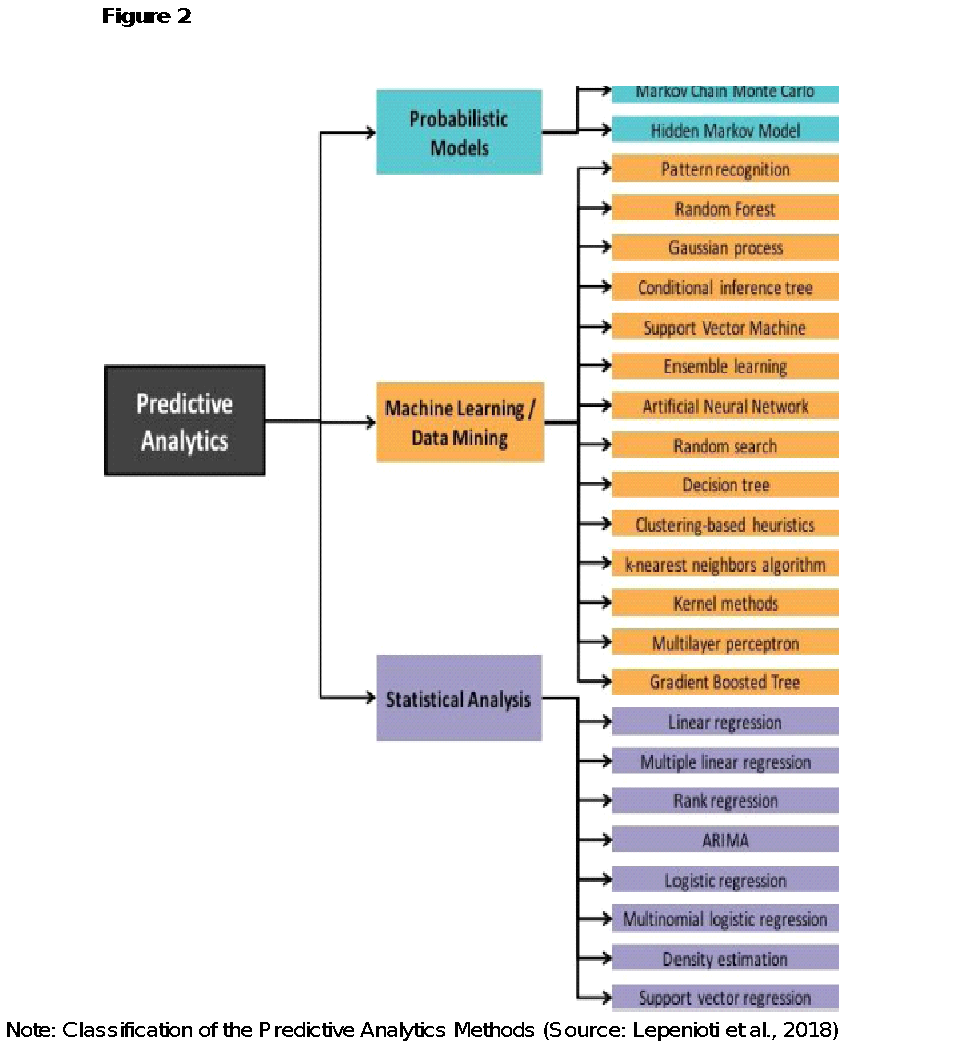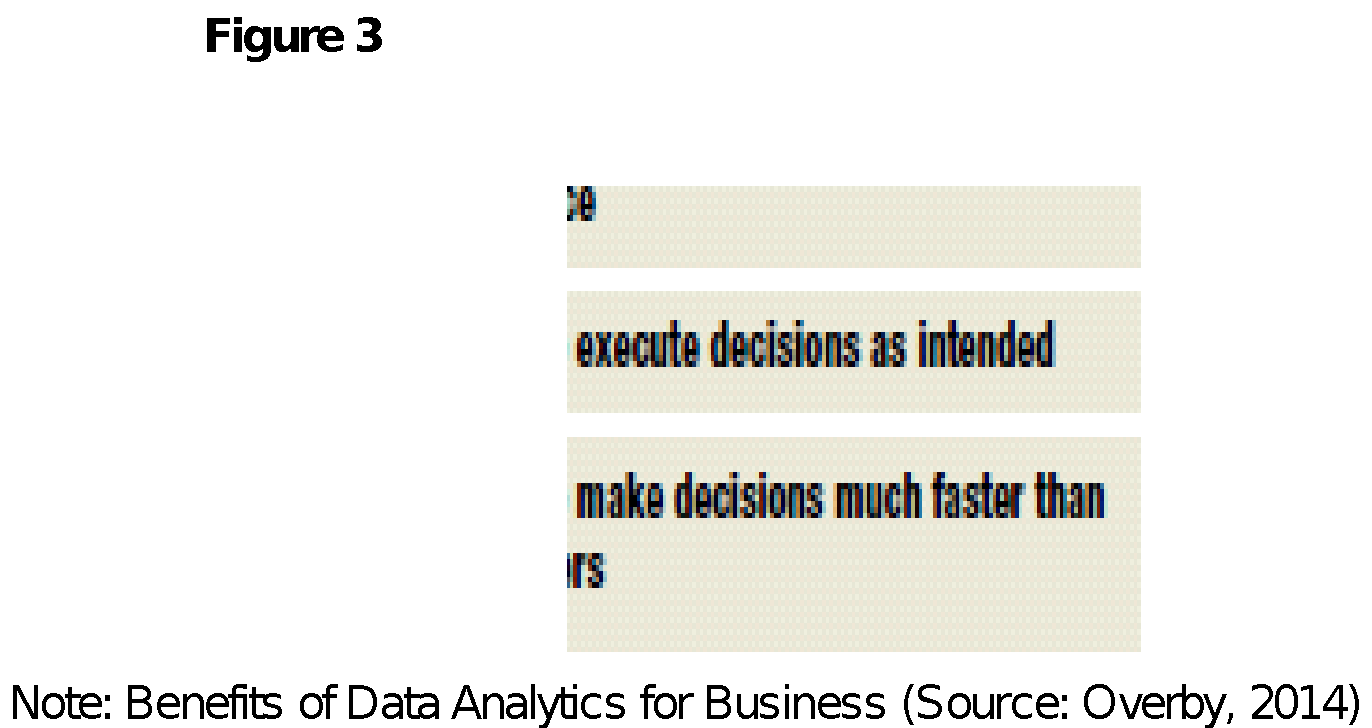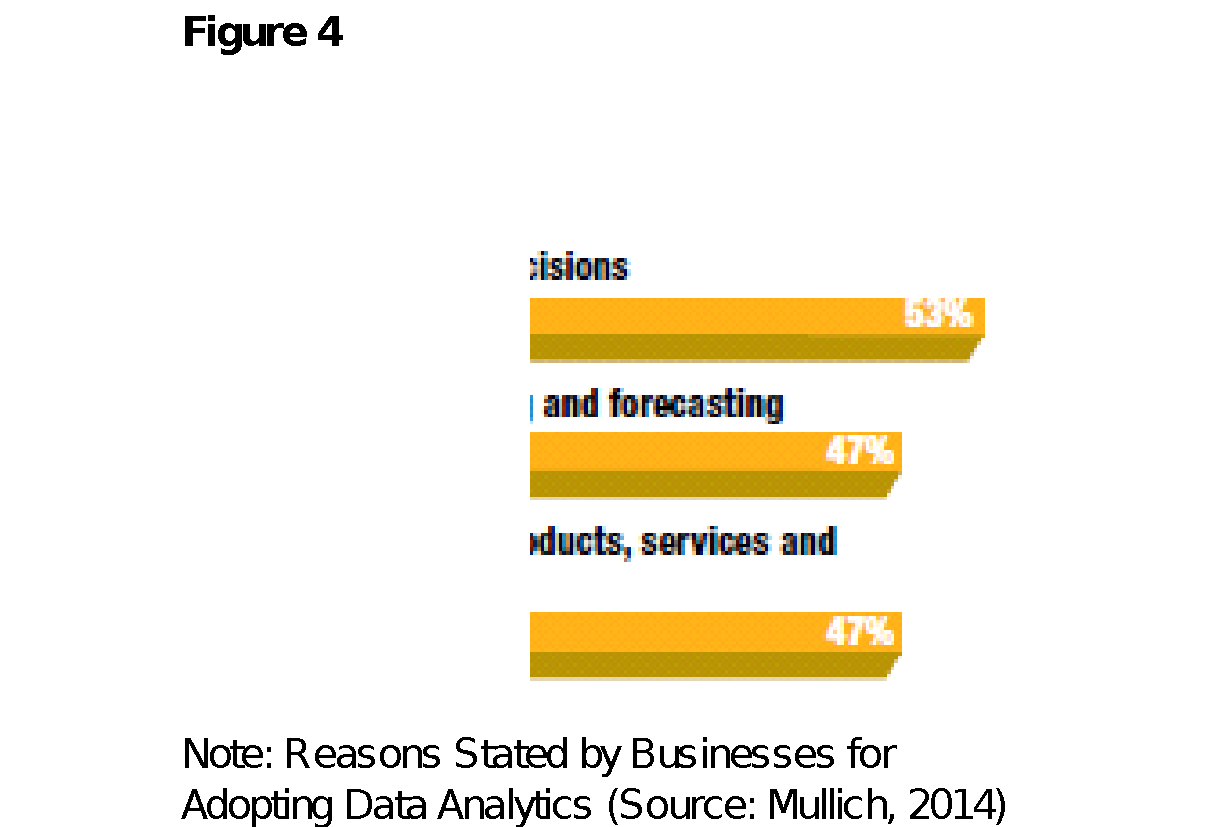Using of Artificial Intelligence and Big Data by Small Family Business to Compete with Big Organization
The objective of the research in this study was to examine the use of Artificial Intelligence and Big Data by small family businesses concerning their capability of competing with big companies. The study found that not only are AI and other data analytics tools more affordable than ever, but small family businesses can also seek outside help to implement and learn how to use those business tools, and realizing huge benefits and increasing their ability to compete with larger companies.
Introduction
Artificial intelligence (AI) and big data are increasingly gaining attention and have opened the door to new forms of entrepreneurship and have been referred to as the 'second machine age' (Obschonka & Audretsch, 2020). AI and big data have worked to transform business in a fundamental manner, which can be likened to the transformation wrought by electricity a century ago (Obschonka & Audretsch, 2020). Although larger companies have a firm grasp of the use of artificial intelligence and big data, less is known about how family businesses are positioned to use each of them. Business analytics are described by Lepenioti et al. (2018) to be "the extensive use of data, acquired by diverse sources, statistical and quantitative analysis, explanatory and predictive models, and fact-based management to drive decisions and actions" (p. 57).
Research Objective
This study aims to examine the use of AIand big data by small family businesses concerning their capability of competing with big companies.
Research Questions
The research questions this study seeks to answer are the questions stated as follows:
- Are small family businesses using artificial intelligence and big data?
- How do artificial intelligence and big data support small family businesses to compete with big companies?
Methodology
The methodology used in the present study is the literature review method. As per Snyder (2019), the researcher should describe the literature review method in detail, ensuring its worthiness for publication. Previous studies will be reviewed to answer the research questions. The articles for inclusion in the literature review were identified using Google search using the following search terms using the Boolean operator 'AND':
- Family business AND big data, AI, data analytics
- Family business AND competition AND big data
- Family business AND competition and AI
- Family business AND competition and big data
There is little information on the use of big data by family businesses; however, the researcher identified articles that were relevant and therefore worthy of inclusion in the literature review. The lack of peer-reviewed articles was noted, and the researcher decided to include industry reports in the literature review. The literature review in the present study is an integrative review that has the express purpose of assessing, critiquing, and synthesizing the literature in a manner that supports the emergence of new perspectives (Snyder, 2019).
Literature Review
The literature review presents information about the use of AI, big data, and data analytics by family-owned businesses that have assisted them in competing with larger firms. The literature will also present general information about the benefits of AI, big data, and data analytics for family-owned businesses.
FINH is a company that provides services to family businesses throughout the Asia Pacific, and its managing director, David Harland, related that AI would impact family businesses in the years to come. Harland (2019) revealed that family businesses are moving toward the use of AI and big data and stated the example of a UK business, Dyson, which is family-run and is a technology firm and whose engineers are using AI for the express purpose of advancing the company's competition. The company's most recent vacuum cleaner design makes use of AI in the identification of high-dirt areas, and the behavior of the vacuum is then adapted to ensure a better clean (Harland, 2019). As shown in figure 1, the new FINH V15 Detect vacuum cleaner model, which is reported by Dyson (2021) to be the cordless vacuum on the market that is the most intelligent, with two cleaning heads that measure the dust particles and even count them to ensure extremely deep cleaning. Figure 1 shows the newly developed vacuum that arose from using AI.

According to the owner of the company, James Dyson, artificial intelligence can benefit many products of the business including, purification and lighting (Harland, 2019). Therefore, AI holds promise for not only assisting in data analytics and marketing but also in terms of product development.
When it comes to big data, the family-owned company Asgard headed by Fabian Westerheide in the UK, revealed that the company is using big data and AI to identify trends before they even occur and to personalize orders and marketing strategies (Harland, 2019). Westerheide acknowledged that the use of big data and AI had provided the company with a competitive edge (Harland, 2019). As per Hooljdonk (2019), AI is one of the greatest of all emerging trends in technology and helps in automating the complex and most mundane processes, promising to bring about core changes for family-run businesses. The use of AI has many uses and applications for family-owned businesses.
Snow Peak, which manufactures apparel and outdoor clothing is a great example of using AI successfully by a family business in Japan. Snow Peak decided to invest in predictive analytics, so the company could gather the data and then unify it across different markets in real-time (Hooljdonk, 2019). Figure 2(below) shows the classifications of the predictive analytics methods that are used in data analytics.
As shown in figure 2 (below) predictive business analytics uses probabilistic models, machine learning and data mining, and statistical analysis, all of which hold great potential for small family-owned businesses just as it assisted the company Snow Peak.
The use of the data analytics tools that were powered by AI enabled the company "to make targeted suggestions for future purchases" (Hooljdonk, 2019, para. 4). As a result, the company increased its revenue and boosted its growth (Hooljdonk, 2019). For Snow Peak, data analytics was combined with AI to ensure that data could be gathered and then analyzed in the real-time business environment, a clear benefit to family-owned businesses.

Gow (2020) examined how AI could help small and medium-sized businesses compete against larger companies using AI. Many family businesses are smaller to medium-sized companies, and the big companies certainly have many advantages about AI because they possess more talent, more data, and have more money to work with for investing. However, according to Gow (2019), smaller and medium-sized businesses can work to leverage consulting firms and AI vendors to support the implementation of AI. Smaller businesses can use AI for customer engagement to increase sales by identifying new customers that are serious prospects (Gow, 2019). AI assists smaller companies in forecasting trends, all of which enables smaller to medium-sized companies to compete with larger companies (Gow, 2019). Furthermore, the use of big data by small companies provides them with a greater possibility "than ever to go head-to-head with big corporations" (Edwards, 2019, para. 14). Therefore, in addition to marketing and data analytics, AI is useful in forecasting and customer engagement, which ultimately increases sales. Many small family-owned businesses may be afraid about their ability to use AI and data analytics, but as noted by Gow (2019), the use of vendors and consulting firms can assist those businesses to do what they cannot do alone.
Although AI tools were so expensive, to begin with, that only the larger companies could afford them, family businesses that are smaller can now afford AI technology (Redding, 2019). The use of AI by the smaller and family-owned businesses offers the opportunity to increase the revenues of the business, as well as being representative of a method to differentiate the business from the more than 90 percent of smaller businesses who have not yet begun to use AI (Redding, 2019). The benefits of AI include: (1) efficiency increases; (2) costs are reduced; (3) results are improved; (4) customer intelligence is stronger; and (5) improvements in responsiveness as well as customer experience (Redding, 2019). The decrease in prices for using AI is positive for small family-owned businesses making AI more affordable and yielding great benefits for those businesses. When the affordability of AI is combined with the ability of those businesses to gain outside help to implement the use of AI and data analytics, those businesses can accomplish what they may have believed they could not do.
An example of a family business that used big data to not only compete with bigger companies but to overcome their competition is the case of Florida Crystals, which started in Cuba in the mid-1800s and is now the world's largest refiner of sugar. The company wanted to improve its agility and to better manage the activities of the company with a focus on a growth strategy that was aggressive (Overby, 2014). According to Overby (2014), businesses that use data analytics realize the benefits better as shown in figure 3 (below)

Florida Crystals took that information to heart and set out to increase the company's competitiveness. To realize the level of competitiveness it desired and to overcome the limitations of its current analytics, the company turned to the use of big data. The company adopted an in-memory system in the cloud that enabled it to keep "terabytes of data in sync" during the transfer of the data and accomplished the changeover of systems in just a few days (Overby, 2014, p. 45). The result of the implementation of the big data system was a doubling in the speed of the analysis of accounts payable, which took only milliseconds, and other programs for analysis only took minutes, whereas before it had taken hours (Overby, 2014). Notably, implementing the system was so quick and easy, which holds great promises for family-owned businesses in their implementation of the use of big data and to ensure they can realize the more effective analysis of their data. Among businesses polled that had implemented the use of data analytics, the outcomes realized for the use of those business tools as depicted in figure 4 below.

As shown in figure 4 and as reported by Overby (2014), firms using advanced analytics are more likely to be in the top quartile of financial performance within their industries, to execute decisions as intended, and to make decisions faster than market peers. "It's a game-changer" (Overby, 2014, p. 46). Florida Crystals were found to have realized the benefit of: "times for most business transactions have improved by anywhere from 50 percent to 500 percent. We don't just make work faster; work goes away" (Overby, 2014, p. 46). In addition, the employees of the company are no longer required to download the needed data in spreadsheets, format it, and then upload it to reconcile it with the other associated reports (Overby, 2014 The rise of Florida Crystals in overtaking its competition demonstrates how big data can increase small family business competition against big companies. In addition to easy and quick implementation of big data analytics, family-owned businesses can save a great amount of time in preparing the data for analysis, and the businesses will perform better and make quicker and better-informed decisions.
Mueller, Inc. is a family-owned business and a steel manufacturer in Texas that was established during the decade of the 1930s (Anderson, 2017). The company has worked across time with the latest technologies to ensure it would be able to compete with the larger competitors (Anderson, 2017). Mark Lack, the manager of business intelligence and strategy analytics for Mueller, Inc., is noted to have stated of cognitive analytics and the company's consideration for adopting AI after he attended an IBM World Watson event in past years that the questions asked were inclusive of how AI could be used by the business, and how would it be possible to use the technology to make a different (Anderson, 2017). Anderson (2017) interviewed Mark Lack, who noted that big data, AI, and cognitive analytics had helped the company to grow from just one to forty-one locations. Cognitive analytics resulted in a change in the approach to marketing and customers and are used by the company for efficiency as well as effectiveness (Anderson, 2017). Just as Lack realized the benefits of AI and cognitive analytics, small family businesses can benefit from their use.
In addition, Mark Lack noted that the technology is used in novel ways that their competition is not using. Mueller, Inc. has used big data to analyze huge volumes of data coupled with the creation of an analytics platform that enables the company to delve into large volumes of data. Cognitive analytics involves the use of artificial intelligence and augmented intelligence and makes provision of the information needed on the business processes for Mueller, Inc. (Anderson, 2017). According to Lack, cognitive analytics can take the big data and identify solutions very quickly that would have previously been impossible because it would have taken people up to hundreds of years to mine through that much data (Anderson, 2017). The use of AI and cognitive analytics offers small family-owned businesses huge potential to make the best possible use of huge volumes of data.
Cognitive analytics has assisted Mueller, Inc. in identifying solutions very quickly. In addition, driving the competitive edge for Mueller. Inc. is the use of predictive analytics. Predictive analytics supports the ability to load the spreadsheets into the system for analytics related to sales, retail, and supply chain data (Anderson, 2017). When Mark Lack went to the Watson event and talked to the owner of Mueller about using big data analytics and cognitive analytics, as well as artificial intelligence, the company considered how it was that the newer technologies could be applied to the business and realized that cognitive analytics was the future of the company in many areas (Anderson, 2017).

The power behind cognitive analytics for Mueller, Inc. is that it provides answers to questions that were not ever asked. The use of AI, big data analytics, predictive analytics, and cognitive analytics has driven Mueller, Inc. to new heights and given the company the needed power to overtake its competition (Anderson, 2017). Predictive analytics, along with AI and cognitive analytics, increased the competitive edge for Mueller, Inc. and holds the same promise for small family-owned businesses. Furthermore, cognitive analytics will make provision of answers to questions that the small family-owned businesses never even thought to ask.
Summary
Data analytics, including predictive and cognitive analytics, and AI hold great promise for small family-owned businesses seeking to grow their companies and compete with larger businesses. The good news is that while those business tools were previously very expensive, they are now very affordable. Moreover, businesses can seek outside help from vendors and consulting firms to help them implement those tools, with some companies offering ongoing and regular assistance after the solutions have been adopted, so the small family-owned businesses are not left alone to attempt and use the tools.
Discussion and Recommendations
There is absolutely no reason that small family-owned businesses cannot adopt the use of AI and data analytics tools. The prices are affordable, and there is outside help the businesses can tap into to gain assistance in implementing those tools, as well as ongoing assistance in using the tools. The AI and data analytics tools, including predictive analytics and cognitive analytics, have been shown in the present study to be of huge value to small family businesses, including stimulating business growth, increasing customer engagement, making faster decisions that are more effective, and increasing the capacity of those businesses to compete with larger companies.
The recommendations for family-owned businesses arising from the research in the study include those stated as follows:
- Small family businesses should adopt the use of AI and big data sooner rather than later if they want to compete in today's market.
- Small family businesses should seek help from outside vendors and consulting services if they feel they are not equipped to implement artificial intelligence and big data.
Conclusion
The objective of the research in the present study was to examine artificial intelligence, and big data use by small family businesses concerning their capability of competing with big companies. The research questions the study sought to answer were those of:
- Are small family businesses using artificial intelligence and big data?
- How do artificial intelligence and big data support small family businesses to compete with big companies?
The literature reviewed in the study yielded surprising findings. Small family businesses are not only using big data and artificial intelligence but, by doing so, are indeed competing with and, in some cases are overcoming their competition. For example, in some of the small family-owned businesses, the use of AI, big data, data analytics, and even cognitive analytics helped them in growing their companies, streamlining data processing, developing new products, and realizing growth in profits. AI and data analytics also help small family businesses in analyzing data that previously would have taken hundreds of years to analyze manually.
The use of AI and data analytics places smaller family-owned businesses in a position to compete with larger companies due to the increases in the ability to analyze their data, increase customer engagement, and make quicker and more efficient decisions more effectively. The companies reviewed in the study demonstrated the benefits of AI, big data, and data analytics use and realized huge growth, positioning the companies to compete with larger companies and even to rise above competitors.
In conclusion, the incredible benefits of AI, big data, and data analytics to small family-owned businesses highlight the need for those businesses to get on board with the use of those incredible business growth tools, so they can position themselves to be competitive, to better use their vast amounts of data, increase customer engagement, develop new products, and ultimately to ensure they are not left behind by their competition.
Author: Bobby Boruah
References
Anderson, K., (2017). How does a family-owned steel manufacturing business use cognitive analytics?https://siliconangle.com/2017/11/08/family-owned-steel-manufacturing-business-use-cognitive-analytics-ibmcdo/
Edwards, M. (2019). Small businesses must take advantage of the democratization of data.https://www.business.com/articles/small-business-and-big-data/
Gow, G. (2019). How AI can help small and medium businesses compete against big companies. Forbes.https://www.forbes.com/sites/glenngow/2020/08/02/how-ai-can-help-small-and-medium-businesses-compete-against-big-companies/?sh=f958c0c2bbdd
Harland, D. (2019). Rise of the robots: From big data to artificial intelligence. FINH. https://finh.com/news/rise-robots-big-data-artificial-intelligence/
Hooljdonk, R. (2019). The top three trends are set to impact family businesses in the future.https://www.campdenfb.com/article/top-three-trends-set-impact-family-businesses-future
Lepenioti, K., Bousdekis, A., Apostolou, D. &Mentzas, G. (2020). Prescriptive analytics: Literature review and research challenges. International Journal of Information Management, 50, 57-70. https://doi.org/10.1016/j.ijinfomgt.2019.04.003
Obschonka, M., & Audretsch, D.B. (2020). Artificial intelligence and big data in entrepreneurship: A new era has begun. Small Business Economics, 55(3), 1-33. https://www.researchgate.net/publication/333338706_Artificial_Intelligence_and_Big_Data_in_Entrepreneurship_A_New_Era_Has_Begun
Overby, S. (2014). Real-time business sweetens performance at Florida Crystals. Bloomberg Businessweek, 45-47. https://www.ciosummits.com/Online_Assets_SAP_Real-Time_Enterprise_Stories.pdf
Redding, L. (2019). Embracing AI in small business. https://www.illumine8.com/blog/embr acing-ai-in-small-businesses
Snyder, H. (2019). Literature review as a research methodology: An overview and guidelines. Journal of Business Research, 104, 333-339. https://www.sciencedirect.com/science/article/pii/S0148296319304564